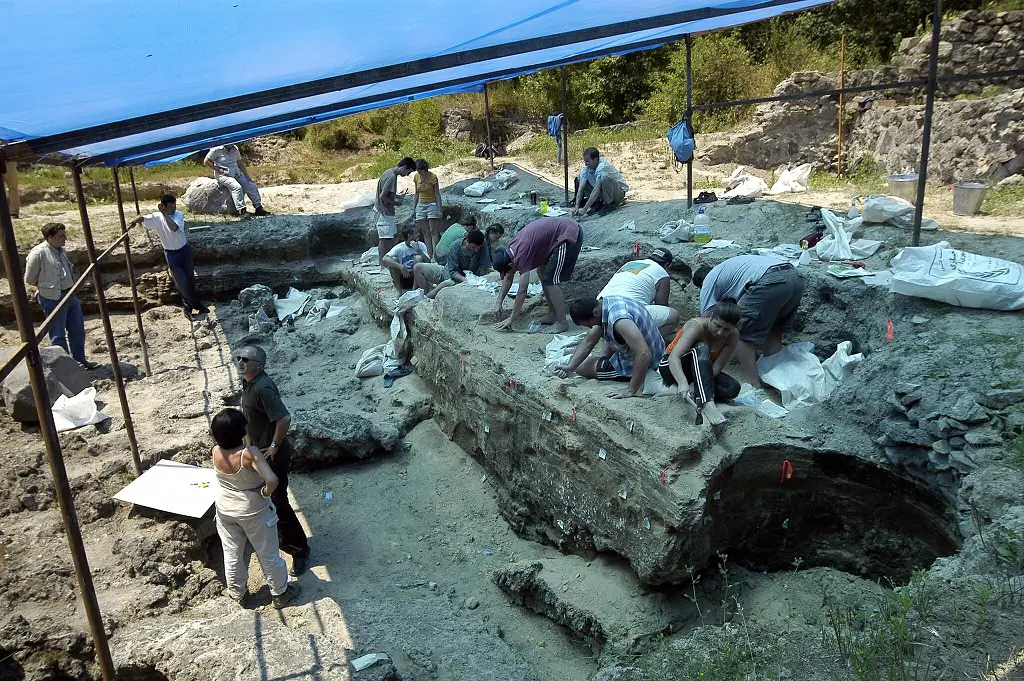The Oldupai Gorge, the most famous gash in the earth of northern Tanzania. First discovered in 1911, this gorge became the backdrop for some of the most iconic hominin discoveries.
While its golden days are well behind, work continues to be done there and hominin discoveries continue to be made, albeit quite fragmentary. This is indeed the case with the recent discovery of the OH (Olduvai Hominin) 86, a left hand finger bone encased in a particular type of sediment, called a Tuffaceous Silt.
The hominin that once operated this finger died for whatever reason near the then Olduvai Lake, 1.84 million years ago, the lake sediments then sped up the fossilisation process of this little finger bone. Unfortunately, the rest of the skeleton was likely washed away and scattered. Nevertheless Palaeoanthropologists were able to draw some very interesting conclusions from something as small as a finger bone.
The analysis conducted on this bone suggests that we are looking at the earliest modern human-like hand bone. Fossil phalanx bones older than this one, have features similar to those of our own hand bones, but OH 86 has a more robust form of what we have today. At 1.84 million years of age, this hand bone features an enhanced gracility that other hominin phalanges of this time do not have.
The team of palaeoanthropologists led by Manuel Domínguez-Rodrigo of the University of Wisconsin-Madison, USA, compared the morphology of OH 86 with other phalanges from different parts of the world and from different ages. Modern human and Catarrhine (dry-nosed primates) proximal phalanges represented the modern day sample, while seven phalanges represented the fossil hominin sample. These are listed below:
Israel:
Qafzeh 9 – Homo sapiens
Qafzeh 8 – Homo sapiens
Kebara 2 – Homo neanderthalensis
Spain:
ATE9-2 – Homo sp.
IPS21350.15 – Pierolapithecus catalaunicus
Ethiopia:
AL (Afar Locality) 333-62 – Australopithecus afarensis
South Africa:
StW (Sterkfontein Witwatersrand) 28 – Australopithecus sp.
UW (University of Witwatersrand) 88-121 – Australopithecus sediba
The above represents two million years of hominin phalanx evolution, but when the curvature of OH 86 was analysed, the Israeli specimens, a mere 120,000 years of age, show more similarities with OH 86 than those of South Africa and Ethiopia. The phalanx of Pierolapithecus catalaunicus was found to have differed the most, not surprising since that phalanx is over 11 million years of age. The phalanges of Gorillas and modern humans shared more similarities with OH 86 than any other group of ape.
If we look at other hominin anatomical regions, we see that the hominin KNM-ER (Kenya National Museum – East Rudolf) 3228 has a pelvis practically identical to modern human males and don’t forget the hominin remains of Dmanisi, Georgia, which have modern human-like leg proportions. You could say that the basic structure of the modern human were well in place by about one and a half million years ago. The robusticity of these features from then on became more gracile and the size of the brain began to increase.

As scientists we often forget that we gain knowledge from the demise of our early ancestors. Imagine a hominin, carefully making its way to the refreshing waters of Lake Oldupai. Silence in the landscape as the sun sets casting that beautiful warm light across the savannah. Unaware of what lurks in the waters of the lake, our hominin quenches it’s thirst. Within a split second, the hominin is between massive jaws, dragged in to the lake waters and forced to drown.
The carcass is stripped of all the crocodile needs and the remains scatter. Fossilisation takes place, while the waxing and waning of the Oldupai Lake ensures that future apes…………………..we Homo sapiens will have difficulty in finding these remains. But as you have seen here, even the smallest fossil finger can ooze its secrets.
For more on the subject, Check out Nature Communications






